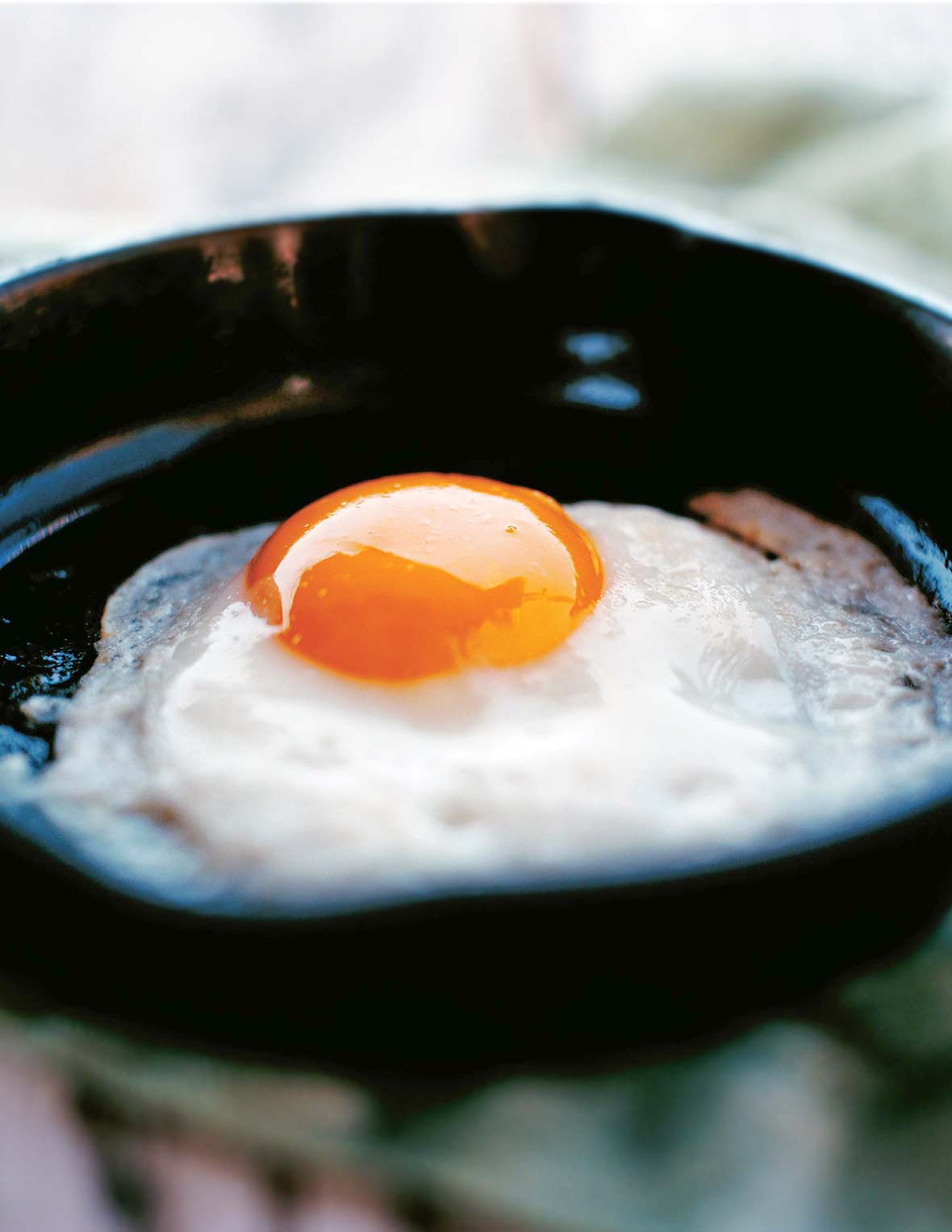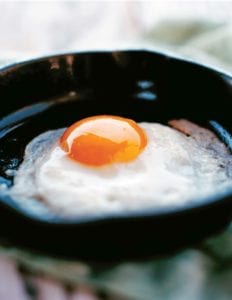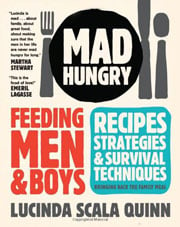
Jump To
How to make the perfect fried egg explains how long to cook an egg sunnyside up and at exactly what heat for a soft, runny yolk and tender whites that aren’t overcooked or crunchy at the edges. And the method used is sorta brilliant. In fact, it’s incredibly brilliant.–David Leite

The Perfect Egg
Ingredients
- 1/2 teaspoon unsalted butter or olive oil
- 1 large egg
- 1 teaspoon water
- Salt and freshly ground black pepper
Instructions
- Heat a small cast-iron or nonstick skillet over medium-high heat.
- Add the butter or oil and swirl it to coat the skillet. Immediately crack the egg into the skillet. Add the water to the pan, reduce the heat to medium-low, cover, and cook for 1 minute.
- Remove the egg from the pan immediately. Season to taste with salt and pepper and serve.

Nutrition
Nutrition information is automatically calculated, so should only be used as an approximation.











Wow, looks good, I’ll try it next time I cook eggs. However, since I know another way to cook a perfect fry egg, I’d like to share it with whoever chances to land here.
Put a cast iron -or non-stick- skillet over high heat. Add olive oil, enough so the egg will halfway float aided by the heat bubbles when you drop it, somewhere around one finger deep. Let it warm till it’s hot, but not too hot. You can drop a clove or two of garlic (unpeeled) if you like the scent, the oil should be ready when the garlic trembles. Then crack the egg in. You can shake it a few times with a skimmer (or whatever similar utensil you use) to ensure it won’t stick (although it shouldn’t) and so the waves of oil over the yolk will cook it slightly, depending on your taste. (I personally don’t like overdoing the yolk.) In perhaps 20 to 30 seconds total, during which you can salt to taste, the egg should be ready, although really the point is when the crispy ripples on the outside of the white are golden. Then remove and serve. If properly done, the white is silken but not raw and bits of it crispy and the yolk, although perhaps covered in a film less luscious looking than in the picture, is nevertheless just a bit thicker than raw, perfect for dipping.
Alternatively, I heard that at a restaurant famed for their fried eggs, they fried them one after another in a tall pot full of oil and retrieved the ready eggs as they floated back to the top.
Joe M, you had me rapt as I read your comment. I love fried eggs and, as such, am intrigued by your description. I shall be trying this technique quite soon. Perhaps as a midnight nosh…thank you!
Okay, David, I’ve always wanted to cook the perfect egg. Is perfection in the taste of the beholder?
You could say that, Marie.
Just perfect! Simple and easy. I will never forget this technique. What have I been doing to eggs all this time? I love Leite’s.